Fall 2024 viewing round-up, part five
I still haven’t mentioned many of the disks I’ve watched in the past three or four months, and there’s a lot of new stuff I need to get to, so it’s time once again for a speed round – which means not giving many of these movies their due.
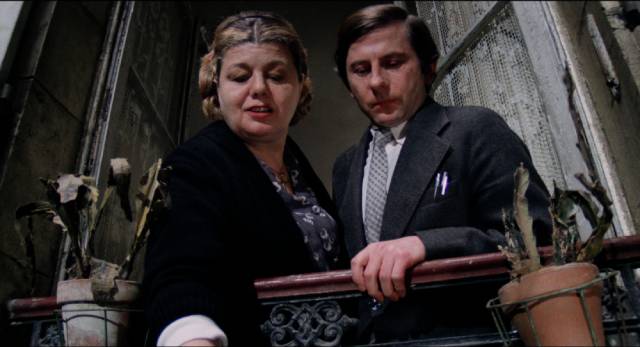
The Tenant (Roman Polanski, 1976)
I hadn’t seen Polanski’s The Tenant (1976) in years. One of his best films, it wasn’t received very well at the time, but seems to improve with age, a superb horror-comedy about an insecure man losing his grip on his own sense of identity. Almost fifty years later, it’s easier to see the issues of gender dysphoria which underlie Trelkovsky’s disintegrating perception of himself and the deepening paranoia he experiences towards his fellow residents in a Paris apartment building. Vinegar Syndrome’s 4K restoration looks excellent, and comes with a new commentary and numerous new and archival interviews.
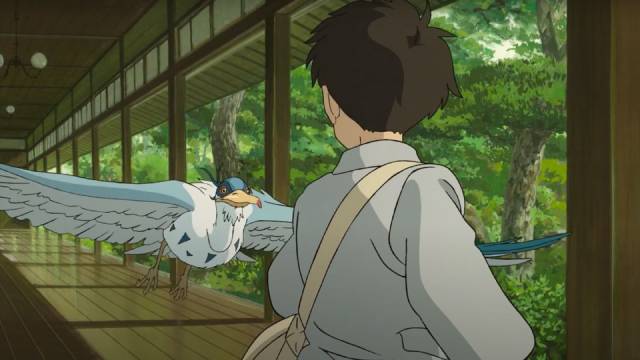
The Boy and the Heron (Hayao Miyazaki, 2023)
Re-watching Miyazaki’s latest feature, The Boy and the Heron (2023), I felt much the same as I did seeing it in a theatre: visually gorgeous, with some of his most accomplished animation, but somewhat rambling as it echoes many elements from his past work and never quite pulls everything together into a satisfying narrative whole. But that criticism comes in comparison with those previous accomplishments – even at this late stage in a long career, Miyazaki remains unequalled as a master of classical animation. Needless to say, the film looks stunning on Blu-ray and comes with several featurettes and the usual complete storyboard accompanied by the full soundtrack.
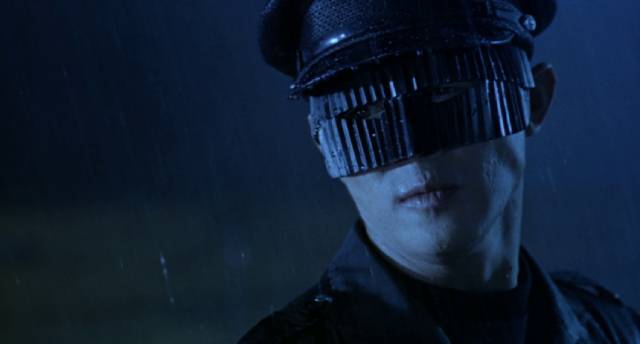
Black Mask (Daniel Lee, 1996)
Jet Li is at his engaging best in Daniel Lee’s Black Mask (1996) as a librarian whose secret identity stems from a program to produce super-soldiers; naturally, his past forces him to come out of hiding and, donning a mask and cap which serve as an homage to Bruce Lee as Cato in The Green Hornet (1966), he accepts the role of superhero fighting his old comrades who’ve turned bad. A high point of ’90s Hong Kong action, presented by Eureka in four different cuts across two disks, along with a pair of commentaries plus several interviews and an archival making-of.
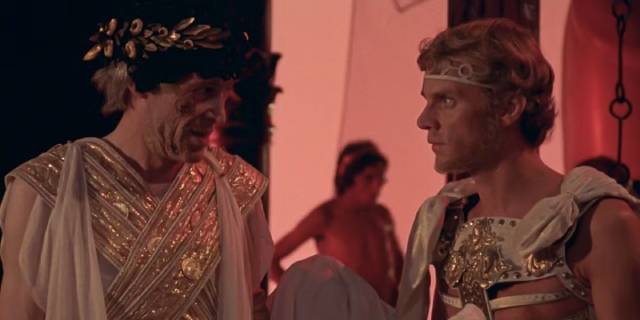
Caligula: The Ultimate Cut (Tinto Brass, 1979/2023)
A real oddity. In 1979, Italian softcore specialist Tinto Brass made an epic about ancient Roman decadence based on a script by Gore Vidal, with a remarkable cast of largely British actors. But Caligula didn’t turn out the way anyone involved expected because producer Bob Guccione, publisher of Penthouse, shot a bunch of hardcore material and edited it in to make the most expensive porn movie ever. Now, more than forty years later, producer Thomas Negovan has done something probably unique in cinema history. He went back to all the original footage and constructed a new version without using a single frame of the original release – it’s all alternate takes and unused scenes – and discarding all Guccione’s porn (which doesn’t mean there isn’t a great deal of sexual content). Running just under three hours, it may not be an artistic achievement on the level of Fellini’s Satyricon (1969), but it is definitely the Granddaddy of a whole genre of ancient epics – all the Italian imitations which followed it, of course, but also movies like Gladiator (2000). The cast is terrific, the sets and photography lush, and Vidal’s vision of the corrupting influence of absolute power intact. Drafthouse Films and Unobstructed View have released it in deluxe 4K and Blu-ray editions which include commentaries, new and archival featurettes, and the original controversial theatrical cut.
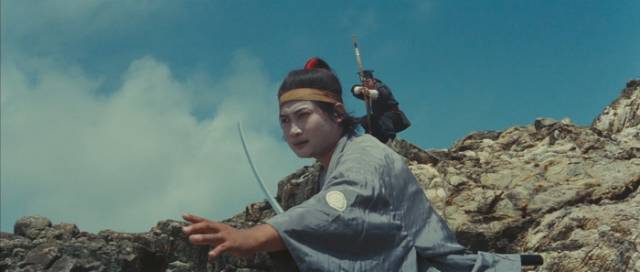
The Valiant Ones (King Hu, 1974)
Perhaps King Hu’s least-well-known martial arts feature – made after The Fate of Lee Khan (1973) and before his two less combat-oriented films, Raining in the Mountain and Legend of the Mountain, shot back-to-back in Korea in 1979 – The Valiant Ones (1974) strips its narrative to the bones and uses it as a framework for numerous impressive fight sequences, coordinated by Sammo Hung, who plays the main villain, a Japanese pirate preying on the villages of the Chinese coast. The emperor sends a small force to root the pirates out … and that mission is the whole of the story. Visually gorgeous, with Hu’s sense of colour and skill with camera movement and editing almost making up for the underdeveloped characters, this is the last of his major features to appear restored on disk. Masters of Cinema have done an excellent job with an eye-popping transfer supplemented with a new commentary and an array of new and archival interviews and featurettes.
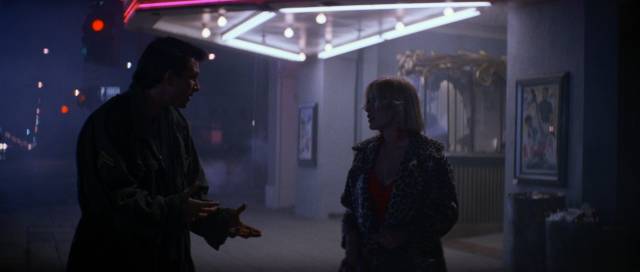
True Romance (Tony Scott, 1993)
The most interesting thing about True Romance (1993) is seeing what another director could make of a Quentin Tarantino script. Tony Scott took on the script before Tarantino had made his debut feature, Reservoir Dogs (1993), so there was no stylistic influence, but Scott had a string of slick movies behind him, where visual style often outweighed story and character. What Tarantino provided here were characters who, as in most of his work, love to talk and there are times during the movie when Scott holds back and just lets the actors do their thing – the high point is the encounter between Christopher Walken’s drug-dealer and Dennis Hopper’s working class guy who refuses to be intimidated into betraying his son. There’s violence, touches of comedy, and a romance which echoes Sailor and Lula from David Lynch’s Wild At Heart (1990). It’s one of Scott’s better movies, his obvious respect for the script grounding it so that he doesn’t feel the need to add on the layers of visual frenzy seen in his worst films. Arrow’s limited edition sports an excellent 4K restoration, with multiple commentaries, interviews, an archival EPK, deleted and extended scenes and an alternate ending.
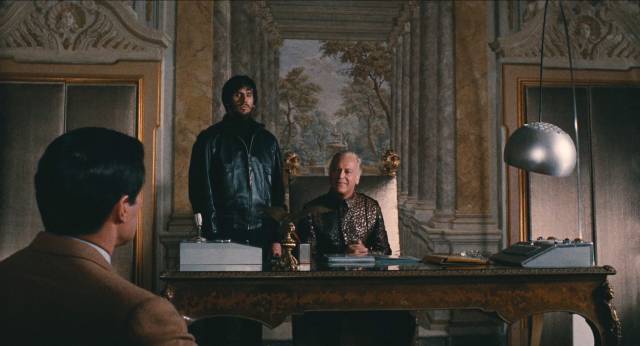
OSS 117 (André Hunebelle/Michel Boisrond, 1963-68)
French writer Jean Bruce created American secret agent Hubert Bonisseur de la Bath aka OSS 117 in 1949, four years before Ian Fleming came up with James Bond. (Bruce wrote 88 novels about the spy in fourteen years before he died at 42; in the following two decades, his wife wrote 143 more, and after her death, their daughter and her husband wrote an additional 23 over five years.) But although there was a film made in 1957, the spy only became popular on-screen with five movies made in the ’60s in the wake of the box office success of Dr. No (1962). Four were directed by André Hunebelle, who would also update Fantomas in three movies around the same time. It would be easy to mistake the OSS 117 movies as imitations of Bond – they share not only a suave international playboy agent, but also similar plots about conspiracies threatening western hegemony or criminal masterminds bent on world domination. Like the Bond films, they unselfconsciously display imperial attitudes and a prominent strain of sexism. Unlike the first five Bond movies, which despite having several directors gained a consistent identity from star Sean Connery, OSS 117 was played by several different actors – Kerwin Matthews and Frederick Stafford each twice and John Gavin once. Like the early Bond movies, these five French thrillers are essentially scrappy B-movies, pulp entertainment without franchise bloat. Kino’s three-disk set presents the five features in acceptable transfers, but without any extras.

Moonage Daydream (Brett Morgen, 2022)
Brett Morgen’s Moonage Daydream (2022) is a dense collage of music, imagery and voices which borders on sensory overload as it spans David Bowie’s five-decade career, during which he changed identities repeatedly, making transformation a core part of his identity. While details tend to get lost in the constant flow, the film is a startling reminder of how rich and varied Bowie’s music and performing career was – he assumed and discarded personae frequently and yet always remained an identifiable figure, whether on stage or in movies. With access to a vast archive of material, Morgen creates a portrait out of fragments which trigger so many memories and emotions for those of us who were long-time fans (I was hooked with “Space Oddity” on his self-titled second album in 1970). The film is a reminder of how certain artists and performers become woven through the fabric of our lives. Criterion’s dual-format edition includes a commentary, a post-screening Q&A, an interview with the rerecording mixers, and a previously unreleased live performance from 1974.

That Guy Dick Miller (Elijah Drenner, 2014)
Elijah Drenner’s documentary about the beloved character actor Dick Miller is an excellent companion piece for Caelum Vatnsdal’s 2018 biography. While Vatnsdal’s book provides a richly textured portrait of Miller, the film benefits from showing the full range of the actor’s work on screen – we see his expressive face and hear his distinctive voice. Like the book, the documentary is a labour of love, overflowing with the affection Drenner and his interview subjects – Miller’s widow, friends and co-workers – all feel for him, an affection shared by those of us who always perked up when he appeared screen, often for just a scene or two, and improved any movie he was in. That effect is on full display in Barbara Peeters’ Starhops (1978), which is included by Dekanalog as a supplementary disk with the doc – an unfunny comedy about three employees who take over a fast-food restaurant after their boss abandons it; that boss is Miller, and the movie never recovers after his quick exit in the opening sequence. The doc itself gets a commentary and supplementary footage from the premiere, some outtakes and some 8mm home movie footage.
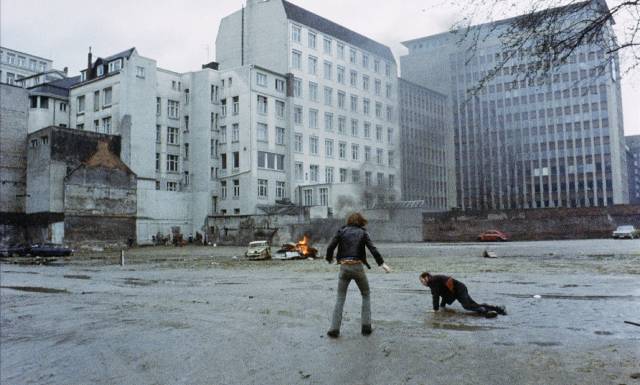
Supermarkt (Roland Klick, 1974)
After the mythic genre qualities of Deadlock (1970), German filmmaker Roland Klick took a very different approach in his next feature, Supermarkt (1974), an extremely grungy realist depiction of those living on the streets of a German city. Petty crime, abusive cops, prostitution and desperation shape the life of Willi (Charly Wierzejewski), who barely connects with a journalist who tries to help him, a homosexual who wants to exploit him and finally a criminal who involves him in a robbery. Bleak and hopeless, the film was shot on the fly (by Jost Vacano) while the real police were looking for Wierzejewski, who was much like the character he was playing. The dual-format release from Subkultur includes a director commentary and new and archival interviews.
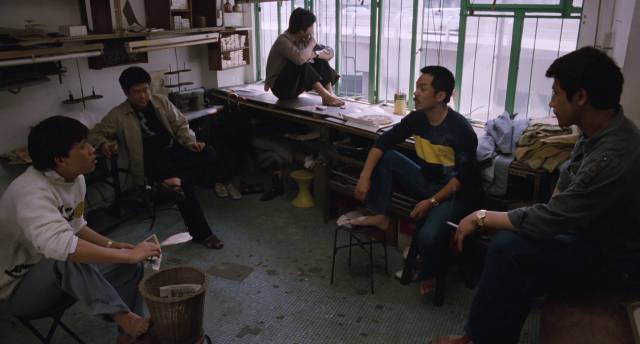
Long Arm of the Law 1 & 2 (Johnny Mak/Michael Mak, 1984/1987)
The first two in a series of action films from Hong Kong, Johnny Mak’s Long Arm of the Law (1984) and Michael Mak’s Long Arm of the Law 2 (1987) are gritty, realistic movies which both deal with desperate men from the mainland trying to improve their lives by illegally entering the British colony only to find things worse than they imagined. In the first film, a group of friends, fed up with poverty, sneak across the border planning to rob a jewellery store. Things inevitably go wrong and the supposedly easy plan collapses in violence. In the follow-up, several illegal immigrants with mainland police experience are offered a chance at citizenship if they’ll go undercover to expose a triad the police have been unable to deal with. When their cover is blown and the triad comes after them, the police refuse to step in and help them. Excellent examples of the more realistic strain of HK action from the ’80s, each film is presented in two cuts in the 88 Films two-disk set – the Hong Kong version and an English-dubbed export cut. Each film gets a commentary and there are multiple interview featurettes.
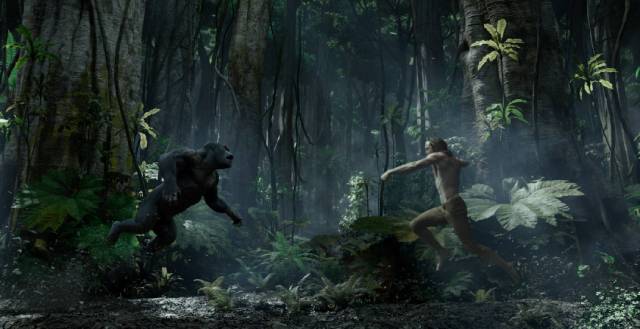
The Legend of Tarzan (David Yates, 2016)
I actually didn’t know Tarzan had been remade in 2016 until a friend gave me a copy he was getting rid of. More than a century after the character was created, he’s become increasingly problematic – an avatar of European colonialism become white saviour – yet David Yates’ The Legend of Tarzan makes an almost convincing attempt to transform him into something more palatable so that the story’s boy’s-own-adventure essence can be enjoyed in good conscience. It does this paradoxically by referencing some very dark real history – specifically King Leopold of Belgium’s genocidal crimes perpetrated in the Congo as the population was enslaved and slaughtered to further the extraction of the land’s natural wealth. Tarzan (Alexander Skarsgård) is called back to Africa from Greystoke Manor in England at the urging of American George Washington Williams (Samuel L. Jackson playing an actual historical figure), who wants to expose the on-going crimes. Once back in country, Tarzan strips down and swings through the trees, reconnecting with his animal pals as he works to thwart Leopold’s brutal agent Leon Rom (Christoph Waltz, revelling in his usual suave villainy). The mix of location photography and CG give the movie a sense of scale and David Yates (who directed four of the Harry Potter movies) provides pace and a mix of humour and gravitas. The white saviour curse can’t be fully erased, but the villains are so awful that it’s still possible to root for the hero. The two-disk Warner set includes a 3D version, along with featurettes focused on the visual effects.
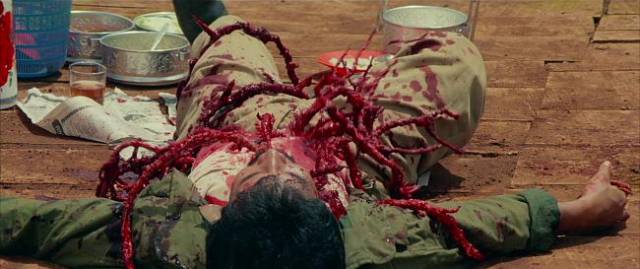
Special Silencers (Arizal, 1982)
There’s nothing quite like Indonesian genre movies – my favourite is still H. Tjut Djalil’s Mystics in Bali (1981) – and Arizal’s Special Silencers (1982) is no exception. Having murdered a shaman and stolen his magic seeds, an ambitious man uses them to seize power in a village – by surreptitiously feeding the seeds to his enemies, causing a gnarly tree to erupt from their guts. A wandering biker teams up with the daughter of the village’s murdered mayor and together they kick ass through the bad guy’s minions before finally feeding him his own sinister seeds. Action stars Barry Prima and Eva Arnaz put on some impressive martial arts displays, while Prima does some nifty dirt bike stunts and Arizal moves everything at a fast pace, but the particular method of assassinating political opponents is what makes the movie distinctively Indonesian. Mondo Macabro’s disk does a decent job with the available materials, including an extended cut with additional scenes sourced from a Dutch VHS tape, adding a commentary and a half-hour UK television documentary from 2001 about Indonesian exploitation.
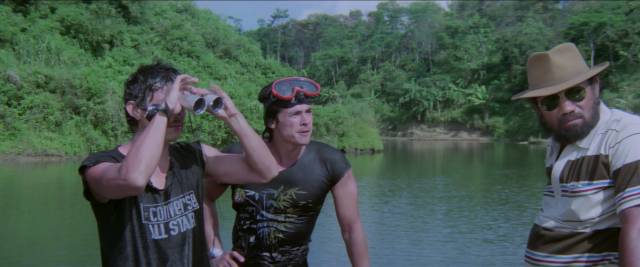
Srigala (Sisworo Gautama Putra, 1981)
Indonesian filmmaker Sisworo Gautama Putra was more than willing to draw on foreign successes – his first feature was a cannibal story echoing the work of Ruggero Deodato and Umberto Lenzi – but his most interesting horror films drew on elements of Indonesian folklore involving ghosts and demons (Satan’s Slave [1980], Sundelbolong [1981], Santet [1988] and its sequel Wanita Harimau [1989]). Srigala (1981) shamelessly displays its debt to Sean S. Cunningham’s Friday the 13th (1980), while dropping in odd narrative non-sequiturs – like two young women arguing over a man and gettong into a full-blown martial arts fight. Three men hunting for treasure at the bottom of a lake are interrupted by the two women and their nerdy friend. After trying unsuccessfully to scare off the trio, two of the divers pair off with the women. Meanwhile a masked figure attacks them by tossing dynamite from a speedboat. During a stormy night, this shadowy figure lurks in the woods and begins killing members of the group. An appearance by zombies turns out to be a dream … but maybe there actually is a zombie in the lake, revealed at the end in a shot taken directly from Friday the 13th. The identity of the killer also echoes the original Friday the 13th. Awkwardly structured, with its horror elements mostly packed into the final half-hour, Srigala is only intermittently entertaining. However, scanned in 2K from the original elements the image looks excellent. The Terror Vision Blu-ray includes four brief interviews with the producer and members of the cast.
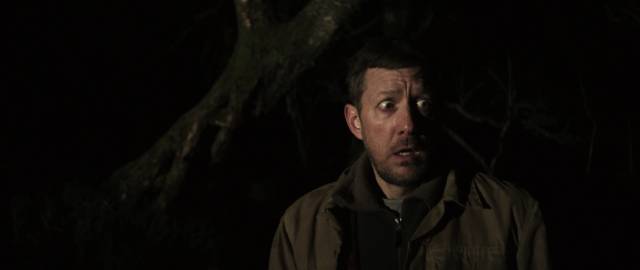
Without Name (Lorcan Finnegan, 2016)
Irish filmmaker Lorcan Finnegan’s debut feature Without Name (2016) is a low-key folk horror tale about a surveyor sent to map an area of forest in preparation for industrial development who falls under the land’s mystical influence. Joined by a graduate student, who may be the reason his marriage is in trouble, and connecting with a loner who lives in the woods, he eventually eats some magic mushrooms which open him up to the strange forces he’s sensed since arriving. The trees themselves seem to be sentient and exerting some influence over him, perhaps to thwart those development plans which threaten to disrupt the natural world. The film produces a sense of creeping unease rather than outright horror and never quite reaches the intensity it seems to be striving for. The Yellow Veil Blu-ray includes an introduction by Finnegan, plus a commentary, deleted scenes, a few featurettes and Finnegan’s short film Foxes.
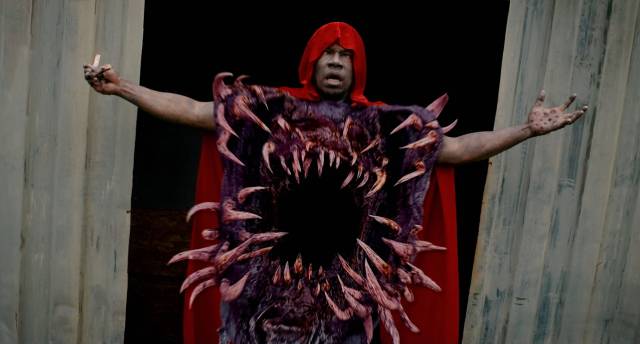
The Old Ones (Chad Ferrin, 2024)
I haven’t seen any of Chad Ferrin’s previous movies, which include H.P. Lovecraft’s The Deep Ones (2020), and have to say I was a bit disappointed by The Old Ones (2024). He tosses a lot of Lovecraft into a blender here and, while his use of practical effects has some charm, his approach undermines the source by not treating the material seriously – it feels half-baked and light-weight. A father and son out fishing hook an old man who claims to have been trapped in R’lyeh for the past 93 years; as if to confirm this, a fishman emerges from the water and kills dad, sending the son and the old captain on a quest to defeat the cult of Nyarlathotep which, naturally, wants to bring the Old Ones back to rule the Earth. Ferrin drops a lot of Lovecraftian names, but his tongue seems firmly in his cheek, robbing the material of the pleasure all those references could give to the writer’s fans. The Dark Star Blu-ray includes a commentary, deleted scenes, and a couple of behind-the-scenes featurettes.
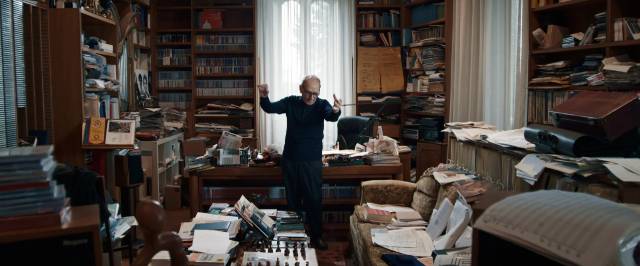
Ennio (Giuseppe Tornatore, 2021)
Giuseppe Tornatore’s documentary about Ennio Morricone provides a lengthy account of the composer’s origins, development and eventual dominance of the field of film scores. Interviews are interspersed with movie clips, recording sessions and tributes from numerous filmmakers who have been associated with Morricone during a career spanning more than six decades. Although the doc is fairly conventional, it serves as a reminder of Morricone’s remarkable range and influence and makes you want to revisit many of the more than five-hundred movies his work has enhanced. The Music Box Blu-ray includes an interview with Tornatore, a deleted scene and some behind-the-scenes footage.
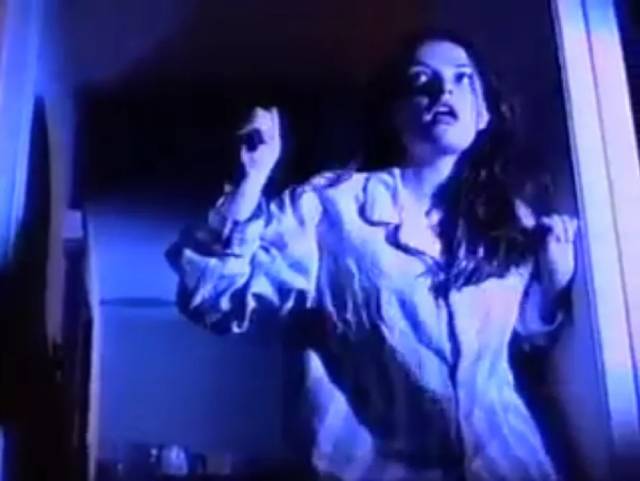
Guilty Pleasures (Joe Zaso & Joseph F. Parda, 1997)
Shot-on-video movies proliferated wildly through the ’80s and into the ’90s, with the majority firmly set in the horror and thriller genres – low-budget productions exploiting tried-and-true materials for a burgeoning audience of home viewers who weren’t too picky about quality as long as the product offered the right kind of ingredients (with an emphasis on sex and violence). A lot of these movies were lazy and dissatisfying, but there were nonetheless ambitious filmmakers who fought against video’s technical limitations to make something more creative. Coming late in the era, Guilty Pleasures (1997) is a two-part anthology heavily influenced by gialli and Italian horror, with visual references to Dario Argento’s use of heightened colour and suggestive imagery.
The two stories are set in the same apartment building, each centred on a resident whose life is going off the rails. In Joseph F. Parda’s Nocturnal Emissions, a woman is menaced by a violent boyfriend and an obscene phone caller, but things get worse when a helpful cop begins to cross professional boundaries and insinuates himself into her life. In Joe Zaso’s Method to the Madness, a woman with acting ambitions signs up for the wrong acting school; the lessons become increasingly twisted and abusive and she begins to lose her grip on reality. While Parda’s episode is tight and focused, Zaso’s is poorly paced and runs far too long, dissipating the overall effect of a fairly ambitious project. About what you would expect from a film like this, the Saturn’s Core Blu-ray has a passable image, along with a commentary from Zaso, a couple of interview featurettes and a trailer.
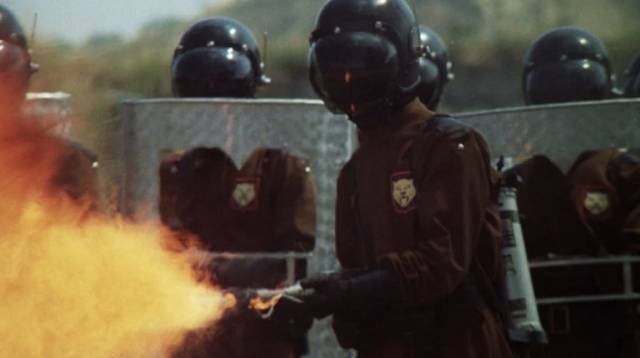
2020 Texas Gladiators (George Eastman & Joe D’Amato, 1983)
While L.Q. Jones’s A Boy and His Dog (1975) is the ur-text for the post-apocalyptic genre, it was George Miller’s Mad Max 2 aka The Road Warrior (1981) that opened the flood-gates to a seemingly endless stream of imitators throughout the ’80s, many not surprisingly coming from Italy. Pretty much every genre director contributed at least one, most taking place in a wasteland or ruined city with characters dressed in fetish gear riding motorcycles or driving modified dune buggies. Until this new release from Severin, I hadn’t previously come across 2020 Texas Gladiators (1983), though there are many familiar names both in front of and behind the camera. After two decades as one of the most recognizable Italian character actors, and a prolific writer of genre scripts, George Eastman (real name Luigi Montefiori) was offered the chance to direct a script he’d co-written with Aldo Florio, though because of his inexperience producer Joe D’Amato stepped in to shoot second unit, mostly the action scenes. The results are one of the best examples of the form, the familiar elements given some interesting twists and unexpected turns – apparent hero Al Cliver is killed quite early, forcing a sudden adjustment in viewer expectations.
A group of survivors inhabiting an old industrial site and trying to maintain a civilized existence are besieged by the army of a would-be Fascist dictator whose men are equipped with armour and futuristic weapons. Much of the film’s entertainment value is provided by Donald O’Brien delivering a very idiosyncratic performance as the Black One (but you’d expect no less from Dr. Butcher himself). Perhaps more clearly than most Mad Max clones, 2020 Texas Gladiators displays the genre’s roots in the western, with a homesteader community under attack from marauding outlaws. The connection becomes very explicit in the climactic sequence when a tribe of Indians turns up on horseback wielding bows to help the settlers defeat the bad guys. It’s an odd mix which manages to be quite satisfying. Severin’s dual-format release supplements an impressive 4K restoration with new and archival interviews plus a soundtrack CD.
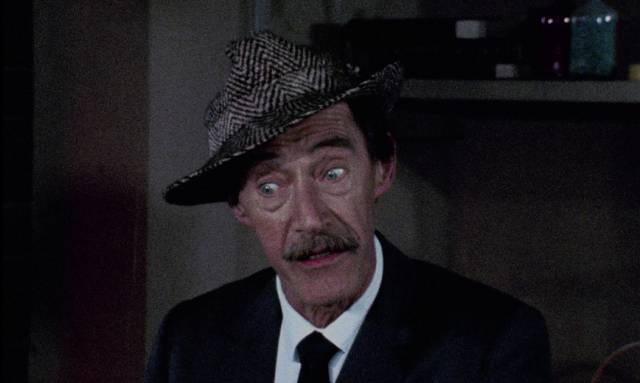
The Mummy and the Curse of the Jackals (Oliver Drake, 1969)
Companies like Severin and Vinegar Syndrome live to unearth forgotten obscurities, polish them, and offer them up as if they’re unjustly neglected gems. Sometimes these movies seem like worthy rediscoveries, sometimes they leave you scratching your head. I kind of enjoyed The Mummy and the Curse of the Jackals (1969), but did find myself repeatedly scratching my head as its threadbare story unfolded. Directed late in a long career by Oliver Drake, who started as an actor in silent westerns and went on to write 151 scripts and direct 41 movies, mostly B westerns, this draws on elements from classic Universal horror movies as well as various poverty row horrors. In Las Vegas, an archaeologist (played by B actor Anthony Eisley) falls for the strangely preserved Egyptian princess Akana and becomes infected with the titular curse, transforming under the full moon into a were-dog which kills various people. Meanwhile, he takes the princess to a Vegas show, shows her how to wear a bra, and eventually battles a bandage-wrapped mummy which also comes back to life. The oddest moments are those in which the jackal and the mummy wander through the crowds on the Strip and elicit barely interested glances from all the actual tourists who happened to be there at the time. The full story of this movie’s origins is told by Sam Panico at B and S About Movies, here. Remarkably, Severin scanned in 4K an internegative found at an estate sale and, despite the flaws you’d expect in such a budget-challenged movie, it has an acceptable, film-like image; supplements include interviews with Stephen Thrower and C. Courtney Joyner – which provide background on Oliver Drake and the production – as well as the son of the producer. There’s also a softcore feature called Angelica, The Young Vixen made by the same production company, which gets its own commentary track.
Comments